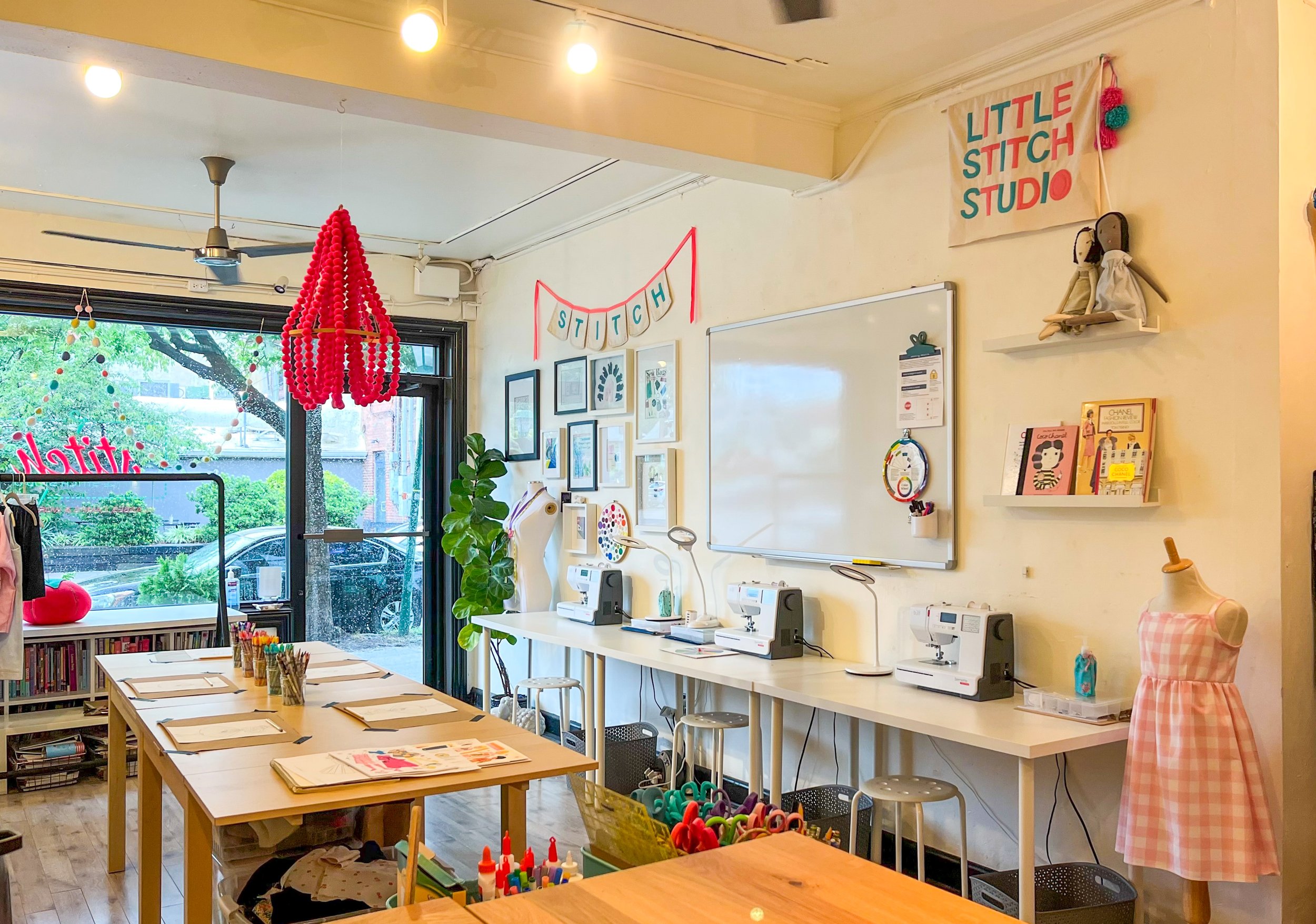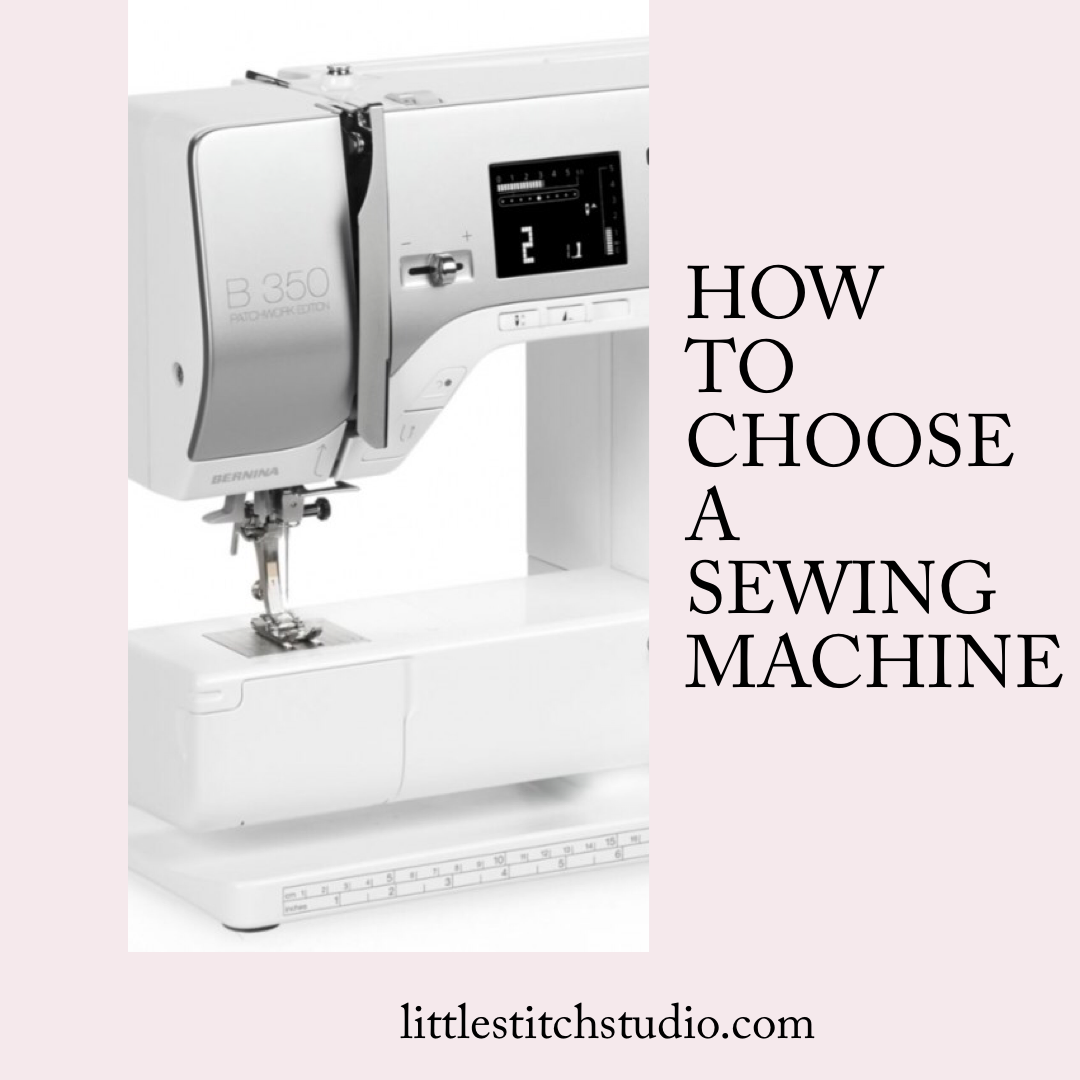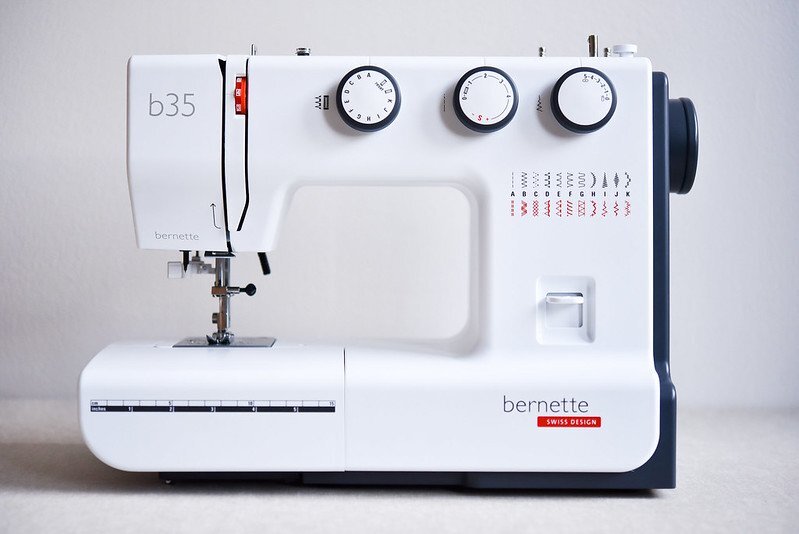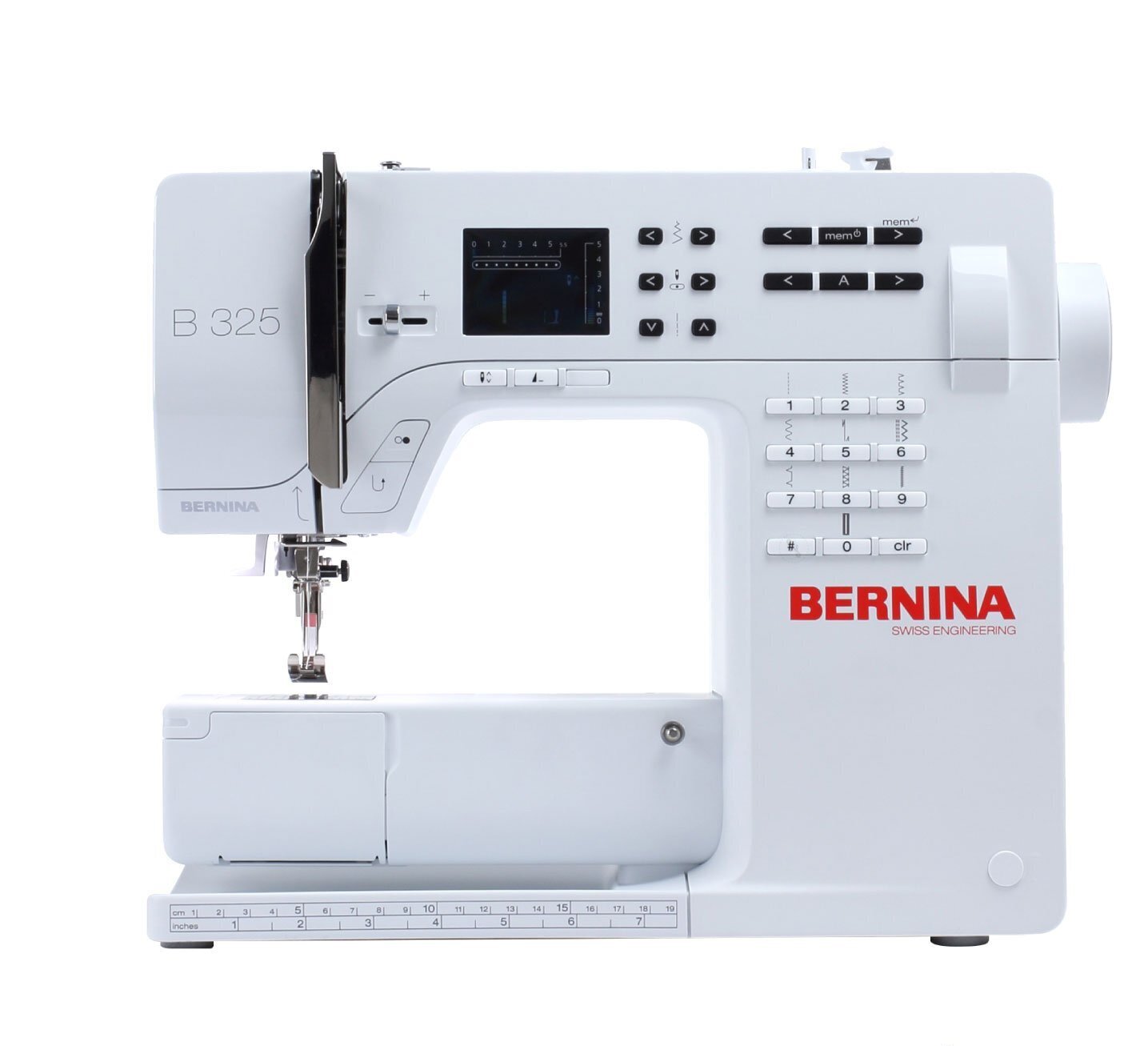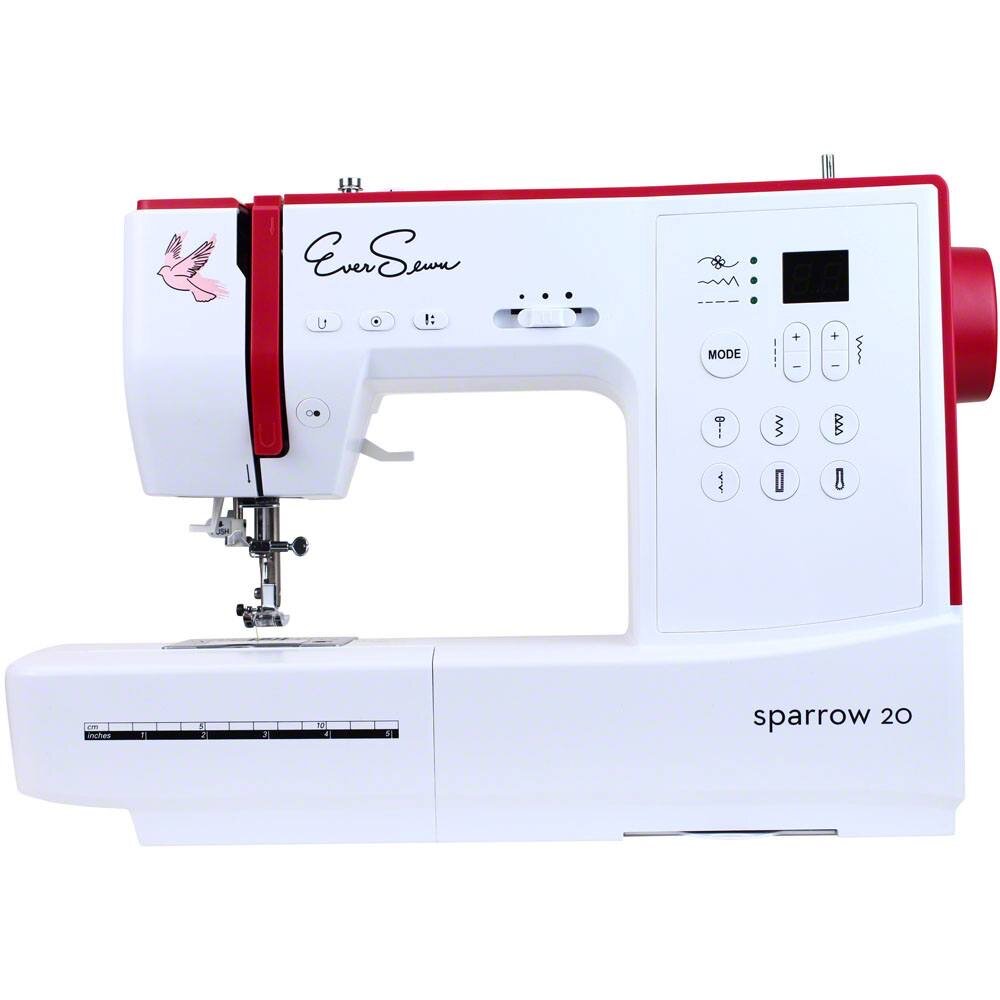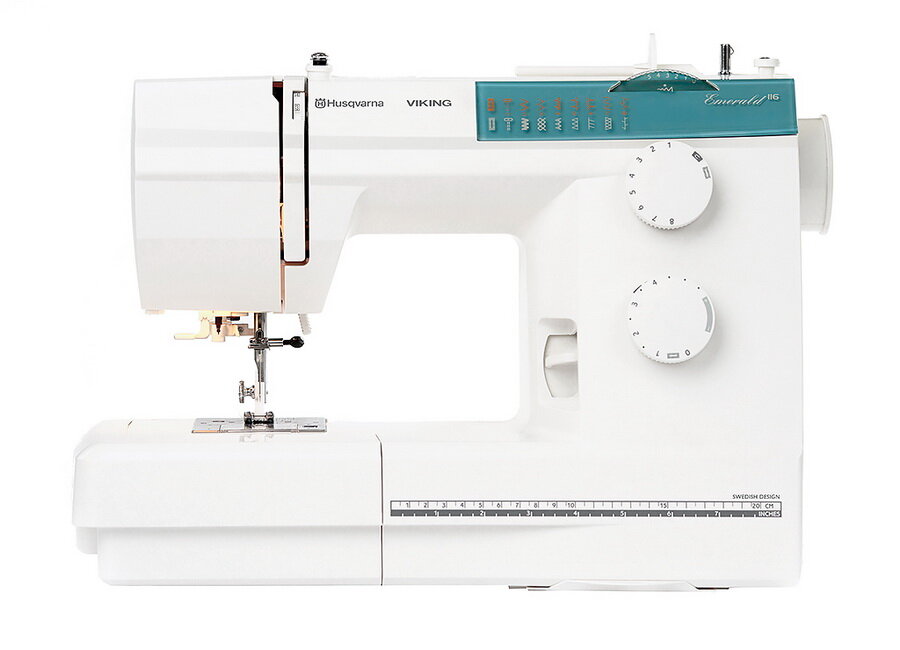THE PRACTICAL GUIDE TO BUYING YOUR FIRST SEWING MACHINE
It’s that time of year again! Beginning in early November, each day I get a phone call, text or email requesting recommendations for purchasing a sewing machine. I love these conversations. The person calling (or writing) is interested in supporting the creative talents of someone special to them and wants a bit of guidance in selecting a machine that will meet the needs of the budding enthusiast today and provide them with room for growth.
No doubt about it, if you don’t sew, or haven’t shopped for machines lately, the options can be a bit overwhelming. Fear not, I’ve got your back. This guide will help to simplify your search and help you to make a savvy choice.
THE PRACTICAL GUIDE TO BUYING YOUR FIRST SEWING MACHINE
CLICK HERE FOR MY FREE GUIDE TO FABRICS AND FIBERS
It’s that time of year again! Beginning in early November, each day I get a phone call, text or email requesting recommendations for purchasing a sewing machine. I love these conversations. The person calling (or writing) is interested in supporting the creative talents of someone special to them and wants a bit of guidance in selecting a machine that will meet the needs of the budding enthusiast today and provide them with room for growth.
No doubt about it, if you don’t sew, or haven’t shopped for machines lately, the options can be a bit overwhelming. Fear not, I’ve got your back! This guide will help to simplify your search and help you to make a savvy choice.
I have sewn for more than 45 years and have spent the last 9 years teaching others to sew. In this time, I’ve tried a lot of sewing machines. While machines certainly offer some incredible functions and convenience features, for the most part, they do the same thing; they stitch layers of fabric together. Sounds simple, right? Yes and no. As with so much in life, the devil is in the details.
UNDERSTANDING YOUR SEWING NEEDS AND GOALS
Sewing machines are designed for both utility and for specific needs. The types of projects that you will be making as well as the kinds of fabric you use, will dictate the features you'll need. It may be helpful to jot down your project ideas and a list of the types of fabrics you’ll likely use most.
What types of projects do you plan to make? Are you sewing for kids or with kids? Do you want to make mostly clothing or quilts and home décor items? Will you be sewing with denim or leather? Answering these questions will help you to find a machine that will support your creative work.
You see, sewing requires constant adjustment in both the mechanical settings and in the way that the fabric is manipulated. Depending on the structure of the fabric you are sewing with (woven, non woven, stretch), as well as its weight, and finish, the machine settings will need to be adjusted to facilitate a smooth stitch. Some machines will automatically make many of these adjustments for you, while others need to be changed manually.
GET MY FREE COMPREHENSIVE GUIDE TO UNDERSTANDING FABRICS AND FIBERS.
Have you ever walked into a fabric store and felt completely overwhelmed? I hear you! To help you to find the perfect fabric for your project, I’ve written a guide to understanding fabrics and fibers. You will learn the characteristics of plant fibers, animal fibers, and synthetics, as well as fabric structure and finish. I also provide some general guidelines for needle selection, thread, stitch type and length, seam finish, pressing, handling and care. Be sure to grab it before you leave!
Choosing a well-designed sewing machine makes learning to sew a much more enjoyable process. A sewing machine is an investment and something that you will likely be using for a very long time. Even if you don’t use it every day, when you sit down to sew, you want it to work. For that, dependability is key.
TYPES OF SEWING MACHINES
Sewing machines fall into three broad categories based on motor type: Mechanical, Electronic, and Computerized.
I generally suggest that beginners purchase a mechanical machine. There are a few reasons for this. The first, they are great machines to learn on. Everything you need to control the stitching is right there in front of you. This makes it easier to begin to understand the working relationship between the needle, the stitch type, width, length, the thread, fabric, and the resulting stitch. When something goes wrong, and it will, the more you know about the machine, the easier it is to trouble shoot. As you progress in skills and want more features, a mechanical machine will be a great back up to take to classes, or when your more expensive machine needs repairs or is just too fussy to deal with.
If you have been sewing for a bit and want some extra features, an electronic machine might be a good fit. Electronic machines strike a balance between simplicity and functionality, offering room to grow into more advanced sewing without the complex interface of a computerized machine. You will find lots of decorative stitches and even an alphabet, plus convenience features such as a thread cutter, needle up/down button and automatic needle threader, speed control, and automatic thread tension adjustment. Electronic machines still require the user to control the settings, but with buttons rather than dials.
Once you have gained some skills and are ready for advanced features, Computerized machines are an option to consider. They are loaded with all types of stitches as well as specialized and convenience features. (Most of which you will never use). However, if you sew a lot, you may want to try one out. You can expect to find built in tutorials, embroidery function, a large work area, the ability to programming the machine for thread weight, needle type and size, and weave of fabric.
TRY BEFORE YOU BUY
A sewing machine dealer or local fabric shop is going to be your best bet for purchasing a machine. If you are new to sewing, you can go in and talk with a salesperson. They will ask you a few questions to assess they type of machine that will suit your needs and budget, then invite you to sit down to try a few out. The staff are knowledgeable and want to help you find the best machine for your needs. Plus, many dealers offer free classes with the purchase of a machine as well as on site repairs.
I really encourage you to shop at a few dealers to try their machines. Dealers generally specialize in a single brand or two of machines. When you find a machine that you love, you will know it immediately.
Pro tip: When I shop for a machine, I like to bring my own thread and a few different types and weights of fabric to test how the machine behaves. This way I can see how it sounds, feels, and stitches.
FEATURES
Domestic sewing machines of all types will offer a straight stitch, zig zag stitch and a buttonhole function. They also come with a set of accessories including, a basic set of presser feet, a standard foot, a zipper foot, and a buttonhole foot. You may also get a few extra bobbins, a seam ripper, a cleaning brush, a package of needles, a screwdriver, and a manual.
Some machines may offer additional accessories such as an extension table, walking foot, overlock foot, blind hem foot, or even an invisible zipper foot. These items can always be purchased separately. You will just need to make sure that they are compatible with your machine.
The types of fabric and projects that you make will dictate the other accessories and features that you will need. Since I primarily sew clothing and accessories, these are among my favorites.
A variable stitch width and length This allows you to customize the length and width each stitch.
Needle up/ down the needle up/down feature works as an extra hand. It is terrific when sewing corners and points so that your actual hands are free to guide the fabric.
Bright LED lights. Essential for being able to see what you are doing.
Adjustable presser foot pressure. Not all fabrics feed through the sewing machine with the standard pressure. Some will drag and others are thick causing the machine to leave marks. The ability to adjust the pressure can improve the quality of your stitching.
Auxiliary spool pin I’m impatient and frequently too short on time. An auxiliary spool pin allows me to wind a new bobbin without having to unthread the sewing machine. While I can do without a lot of features, this one is very important to me.
A good stretch stitch for sewing knits. When sewing, you want the stitches to sit flat and embed only slightly in the fabrics surface. Knit fabric can be tricky to sew with because they stretch. While you can sew knits with a zig zag stitch, the stretch stitch looks and lasts better. If you plan on sewing with knits, take a sample sized fabric with you and try the stitch out.
Walking Foot or Dual Feed These allow each layer of fabric to feed evenly without shifting and sliding. They are great for sewing leather, matching plaids, and stripes as well as for working with thicker fabric.
Optional feet and accessories Sewing machines come with a variety of sewing feet attachments. The ability to just purchase a specialty tool or foot for my machine means that I will use it for more projects and when some new accessory comes out- instead of upgrading my machine, I can just get that new foot or needle plate and experiment.
BUDGET
Within these categories of machines, there are a broad range of prices. While you do need to keep a budget in mind, you do not have to break the bank to get a good sewing machine. At the same time, you also don't want to shy away from quality. To get a quality machine that will last, plan to spend at least $300.
A note on buying a sewing machine for kids. As cute as they are, you want to steer away from toy machines. They are often more frustrating than they are functional. Instead, opt for a real sewing machine that will provide a solid foundation with which to learn and grow. You will want to look for a sturdy mechanical or electronic sewing machine equipped safety features such as a foot pedal, speed control, and finger guard. Kids are hard on sewing machines. A better-quality machine with all metal parts, a wide, sturdy base, and a warranty will be a wise investment. It might even get you sewing too!
RECOMMENDATIONS
Before I make any specific sewing machine recommendations, there are a few things that I’d like to note.
The machines that I recommend are ones that I personally own or have sewn on. This list is not comprehensive, and I do not receive anything from these companies if you click on the link or purchase. These are just the machines that I prefer and trust.
I am a BERNINA brand ambassador. Which means that I am a representative of the company and get to learn all about the exciting new machines and accessories. If you are in the market for a BERNINA Sewing Machine, please contact me and I will be happy to discuss with you.
BERNINA is a 5th generation family-owned company based in Switzerland. They manufacturer the highest quality of sewing machines, which are produced in modern factories that pay their employees a living wage. The factories were updated about a decade ago with an eye toward sustainability and reducing their carbon footprint. BERNINA also has a diffusion line of machines called bernette. I use bernette machines in my classroom.
This might sound like an advertisement- it’s not. I do not receive anything for sharing my opinion or get any monetary benefit from your purchase. It’s just my honest opinion.
At my home studio, I have two main machines; BERNINA 350PE and 590E. (The 350PE is no longer available, but this one is similar). The 350PE is hands down my favorite sewing machine ever. It has all the features you would expect from an electronic machine, with the ability to add new feet and accessories, but still simple to use. I basically turn it on, thread it and go. It sews through anything. (All of the bags in my first book, Sew Bags: The Practical Guide to Making Purses, Totes, Clutches & More, were made on this machine).
The 590E is my fancy machine, meaning I mostly use it for creative sewing or for precision sewing (the tricky stuff!) as it allows me to fine tune every detail. From typing in the exact brand, color, and weight of thread to programming my foot pedal, no detail is too small to customize. Fussy, right? Yes, but sometimes a project calls for perfection.
I have written a few other posts over the years on sewing machines. My recommendations haven’t changed. However, some of the specific machines may be discontinued or have updated models.
At Little Stitch Studio, I have suite of bernette B38s as well as a B79 for quilting and embroidery. These machines are quite impressive and suitable for all types of sewing projects and levels of experience. bernette machines are available in mechanical, electronic, and computerized models. They are solid machines that have intuitive features, sturdy construction, and lots of accessories.
Little Stitch Studio, Norfolk, VA
The b38 is the top model of the 30 series bernette machines. This means that it has the most features and functions. There are some others that I highly recommend for consideration.
Kid Favorite: The Eversewn Sparrow line features mechanical, electronic, and computerized sewing machines. They are some of the most kid friendly machines that I have used. They have a solid weight, intuitive features and sew reliably well. The machines were designed to appeal to a younger customer, one who is enthusiastic about sewing and wants a machine that is both durable and packed with thoughtful features that are typically available in more expensive machines.
Janome, Juki, Pfaff, Baby lock and Viking are among the best sewing machines available. You can’t go wrong with any of them. I will highlight a few individual models but know that these are reliable brands that will last and likely to be passed down through generations. I recommend that you look through the websites and compare the features and prices.
This Janome model has been around for a bit and for good reason. It is an “entry-level” mechanical machine from a dependable brand. This machine is an anniversary edition and comes with a little bag of extra accessories.
I have this Juki machine and have recommended it to many friends and students. It has the ability to sew through several layers of fabric and keep an even tension. Plus the little turtle and rabbit icons help the youngest sewers monitor their speed. (Juki is the standard in industrial sewing machines and their domestic machines meet a similar standard).
Pfaff is another cult favorite brand, with good reason. (I had a young student bring a 1980’s Pfaff into class last week. It belonged to her grandmother and is still going strong! That goes to show you the value of quality and longevity).
Before I purchased my first BERNINA sewing machine, I was a longtime Husqvarna Viking user. In fact, the first machines that I purchased for my studio when I began teaching were the Emerald 118. The Emerald 118 is a mechanical machine that is straight forward, no bells and whistles, but durable and produces a quality stitch. If you plan to do a lot of heavy duty sewing, this is a machine that you will want to seriously consider.
My first location in a room at Ghent Methodist Church, in Norfolk, VA. Those sweet little girls are all teenagers now.
Brother machines are very popular for their price and convenience of buying them just about anywhere. I have some students (both kids and adults) that have them and have no complaints. They are machines that work and have loads of features. You can buy a fully computerized one for less than $300. It is important to note that I make this recommendation with reservation, as Brother machines have an attractive price and they do sew just fine. However, they are made in China and use a lot of plastic parts; this means that they are not going to last forever and is likely that when something breaks, it may not be worth fixing. I certainly don’t mean this to sound snobbish, instead, please understand that I value well made products that are built to last and to be maintained.
In conclusion, choose a machine that aligns with your sewing goals, the types of projects you'll undertake, and the materials you'll use. Whether it's for you or for a child, the right machine can make the journey into sewing a delightful one. And remember, I'm always here to help with personalized machine recommendations and advice to ensure your sewing success.
Happy Sewing!
XO, Hilarie
What Should I Look For When Buying a Sewing Machine? A Guide to Selecting the "Right" Machine for You
Shopping for a sewing machine can seem a bit of an overwhelming task- especially if you don’t have a lot of sewing experience. I’m guessing that if you are reading this article, you might fall into that category. Welcome! I’m so pleased that you stopped by.
There is no doubt about it, 2020 has brought sewing back! A telling sign for me is that instead of the rush of November requests for advice or recommendations for sewing machine, I ‘ve been getting a steady stream for months.
No matter who calls, my advice is always begins with the same question. What are you planning to make? You see, sewing machines are designed for utility and also for specific sewing needs. It helps to know what types of projects you will be making as well as the kind of fabric you plan to use.
You see, sewing machines are designed for both utility but also for specific sewing needs. It helps to know what types of projects you will be making and what kind of fabric you plan to use.
When considering the purchase of a new sewing machine, whether for yourself or as a gift, there are several things that you need to think about.
Shopping for a sewing machine can seem a bit of an overwhelming task- especially if you don’t have a lot of sewing experience. I’m guessing that if you are reading this article, you might fall into that category. Welcome! I’m so pleased that you stopped by.
There is no doubt about it, 2020 has brought sewing back! A telling sign for me is that instead of the rush of November requests for advice or recommendations for sewing machine, I ‘ve been getting a steady stream for months.
No matter who calls, my advice is always begins with the same question. What are you planning to make? You see, sewing machines are designed for utility and also for specific sewing needs. It helps to know what types of projects you will be making as well as the kind of fabric you plan to use.
When considering the purchase of a new sewing machine, whether for yourself or as a gift, there are several things that you need to think about. For starters, what type of sewing machine you actually need. To determine this, spend a few minutes writing down what kind of projects you plan to make. Are you sewing for kids? Making quilts? Clothing? Will you be sewing some home decor items like pillows, draperies and slipcovers? Perhaps you will be making handbags and other fashion accessories. What type of fabric will you be sewing with? Mostly cottons and linens or do you plan to use denim and leather?
Choosing a well-designed sewing machine makes learning to sew a much more enjoyable process. A sewing machine is an investment and something that you will likely be using for a very long time. Even if you don’t use it every day, when you sit down to sew, you want to have one that is dependable. Sewing machines can also be very expensive. While you do need to keep a budget in mind, you do not have to break the bank to get a really good sewing machine.
Once you have these questions answered, you will be able to narrow the options down a bit. If you can, go to a sewing machine dealer or local fabric shop and spend some time looking at sewing machines. There are salespeople there that will be happy to help you select a machine that fits your sewing goals as well as your budget.
When I shop for a machine, I like to bring my own thread and a few different types of fabric to sew with and try the machines out. This way I can see how it sounds, feels and stitches. Since I primarily sew clothing and accessories, the following features are really important to me.
Variable Stitch Width and Length This allows me to customize the length and width each stitch.
Needle down feature The Needle down feature works as an extra hand. It is terrific when sewing corners and points so that your actual hands are free to guide the fabric.
A bright light. Essential- especially for aging eyes.
The ability to adjust the presser foot pressure. Not all fabrics feed through the sewing machine with the standard pressure. Some will drag and others are thick causing the machine to leave marks. The ability to adjust the pressure can improve the quality of your stitching.
Auxiliary spool pin I’m impatient and frequently too short on time. An auxiliary spool pin allows me to wind a new bobbin without having to unthread the sewing machine. While I can do without a lot of features, this one is very important to me.
A good stretch stitch for sewing knits. When sewing, you want the stitches to sit flat and embed only slightly in the fabrics surface. Knit fabric can be tricky to sew with because it stretches. While you can sew knits with a zig zag stitch, the stretch stitch looks and lasts better. If you plan on sewing with knits, take a sample sized fabric with you and try the stitch out.
Walking Foot For me, a walking foot is essential. A walking foot allows each layer of fabric to feed evenly without shifting and sliding. It is also fantastic for sewing leather, matching plaids and stripes as well as for really thick fabric. Some machines may come with the walking foot already attached, others sell it as an optional accessory.
Optional feet and accessories Sewing machines come with a variety of sewing feet attachments. The ability to just purchase a specialty tool or foot for my machine means that I will use it for more projects and when something new comes out- instead of upgrading my machine, I can just get a new foot or plate and experiment.
This is just my list of must-haves. You will likely have a list of your own that will meet your specific sewing needs.
Different Types of Sewing Machines
Sewing machines are broadly categorized by motor type: Mechanical, Electronic and Computerized.
Mechanical sewing machines are the most basic and reliable sewing machines available. They come equipped with a pedal that controls the sewing speed and knobs that you turn to control the stitch selection, width, length and tension. Everything is controlled by the user.
Electronic sewing machines are a bit of a hybrid between mechanical and computerized. They generally offer several convenience features and settings. These machines often have a display and lots of programmed stitches, patterns and designs. While electronic machines do have a foot control, many also sew with the press of a button. Some additional features that many offer are a speed control function, automatic needle threader, needle down button and a thread cutter.
Computerized sewing machines the fanciest of all and they are also the most expensive. Computerized machines are pretty much as the name suggests. A computer runs each motor function of the machine. They are precise, loaded with features and truly amazing to use. If you continue on your sewing journey, I do recommend that you look at these- one day, but not in the beginning.
For a beginner, I almost always recommend a mechanical sewing machine. There are already so many things to learn when sewing, having a machine that you don’t quite understand will just add to the frustration. A mechanical machine is really very straightforward and easy to troubleshoot and fix when something goes wrong. And it will. Don’t worry, there are some mechanical machines that come with a variety of convenience features too.
An electronic machine is my second recommendation, as they do offer more features. Often, electronic machines have many decorative stitches, several styles of buttonholes, some embroidery capability, the ability to control the speed of the machine and lots of accessories. As long as the manual is available or you have someone knowledgeable around, they are fairly easy to learn to sew with. While they will need more maintenance and care than the mechanical machines, they offer plenty of room for growth. The decision really comes back to what you plan to sew, what features you need and how much your budget allows. If you purchase a mechanical machine now and discover down the road you are continuing to sew, maybe consider upgrading. Then you will always have your mechanical machine as a backup to travel with or to use when your electronic of computerized machine is in the shop, as they need routine maintenance.
So which sewing machines do I recommend? The following are machines that I have or have sewn on. This list is not comprehensive, and I do not receive anything from these companies if you click on the link or purchase. These are just the machines that I prefer and trust. (Full disclosure, I am a BERNINA brand ambassador. Which means that I am a representative of the company and get to learn all about the exciting new machines and accessories. If you are in the market for a BERNINA Sewing Machine, please contact me and I will be happy to discuss with you.)
One more bit of advice, you will get much better service by going to a sewing machine dealer or fabric store than if you were to purchase from a big box store. The staff at a dealer are quite knowledgable and want to help you find the best machine for your needs. Plus, many offer free classes with the purchase of a machine as well as on site repairs. That being said, many of you may be under shelter in place orders or wanting to purchase as a gift for an out of town friend or family member and need to purchase online. In the presence of that, I have included some links to Amazon.
If you happen to be searching for a sewing machine for a child, you may want to read this post too. It has a few additional thoughts specific to sewing with children.
Best Sewing Machines for Beginners As Well as those With Some Experience
Bernette
The Bernette B38 is the newest addition to my shop. I have several of these machines and I have to say they are quite impressive.
Other models to consider:
https://www.bernette.com/en-US/3-Series/Bernette-35.htm l
The B38 is the style that I use at my shop, Little Stitch Studio.
https://www.bernette.com/en-US/3-Series/Bernette-38.html
This Sew & Go is particularly good for a child.
You can learn more about the sew & go here and find a local dealer.
BERNINA
This is one of the 300 Series BERNINA machines that are fantastic- and built to last a lifetime. At home, I sew on a BERNINA 350PE and a 570QE.
Eversewn
I have used this machine in my shop for years!
Also see this Mechanical option:
https://www.eversewn.com/maker-100
Viking
The Viking 116 and 117 were the first machines that I used when I began teaching sewing. The 116 is my back-up machine. It packs a lot of power and will sew through anything! Also, the low shank fits most universal feet and accessories.
Juki
I own a single model of this machine but have recommended it for years. Each person who has purchased it seems to really enjoy it.
Janome
I do not own this machine, but have sewn on it many times and have lots of students that are happy with it. Like all of the other brands that I am recommending, Janome is reliable.
Also consider:
https://www.amazon.com/Janome-Magnolia-7318-Sewing-Machine/dp/B001I1D1VA
Babylock
This particular machine will make up for the lack of features for its stitch quality and reliable performance.
Also consider:
I hope that this post will help you to select a sewing machine that will bring you years of joy. Please let me know in the comments, which one you choose- as well as the features that are most important to you.
Happy Sewing!
XO, Hilarie





